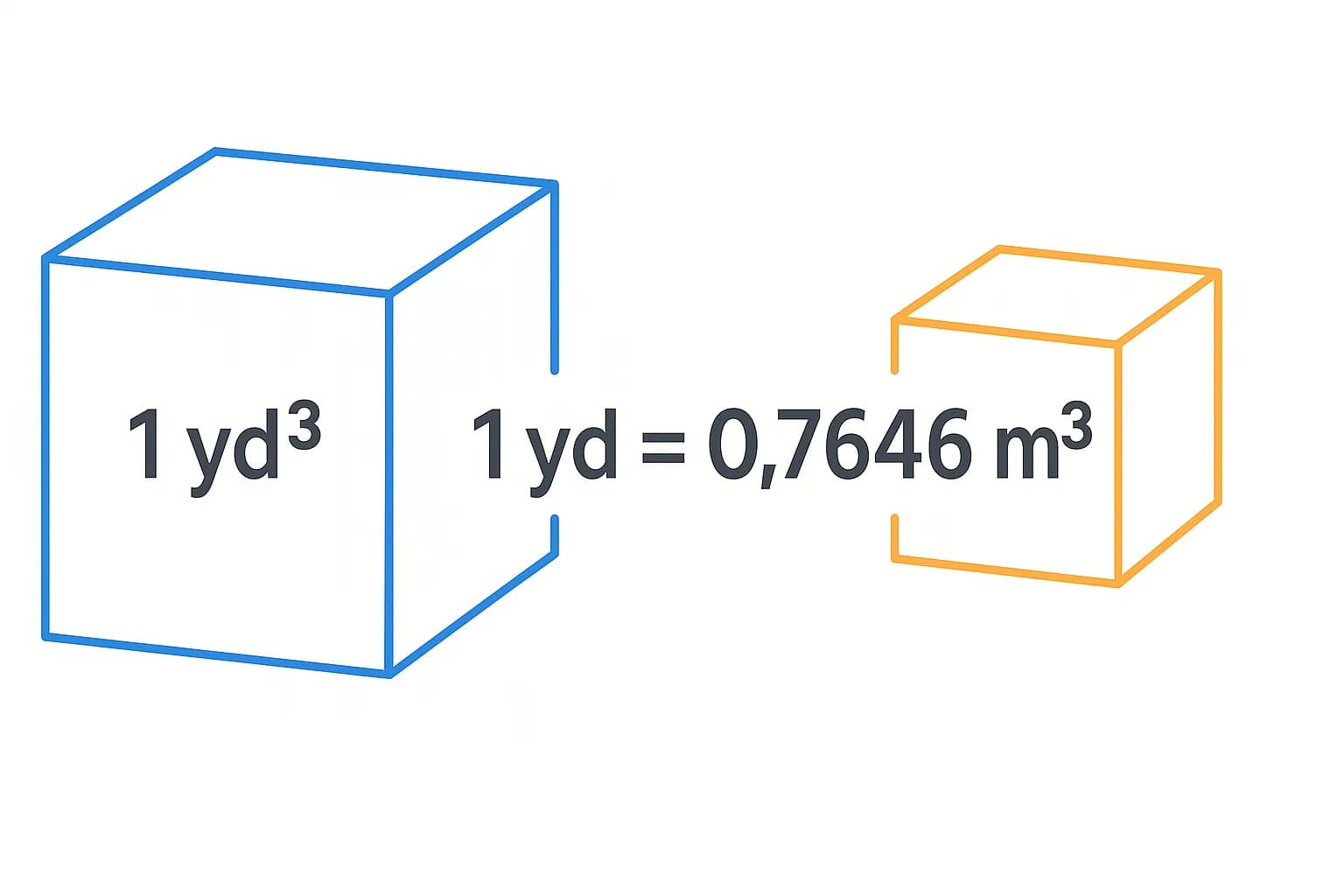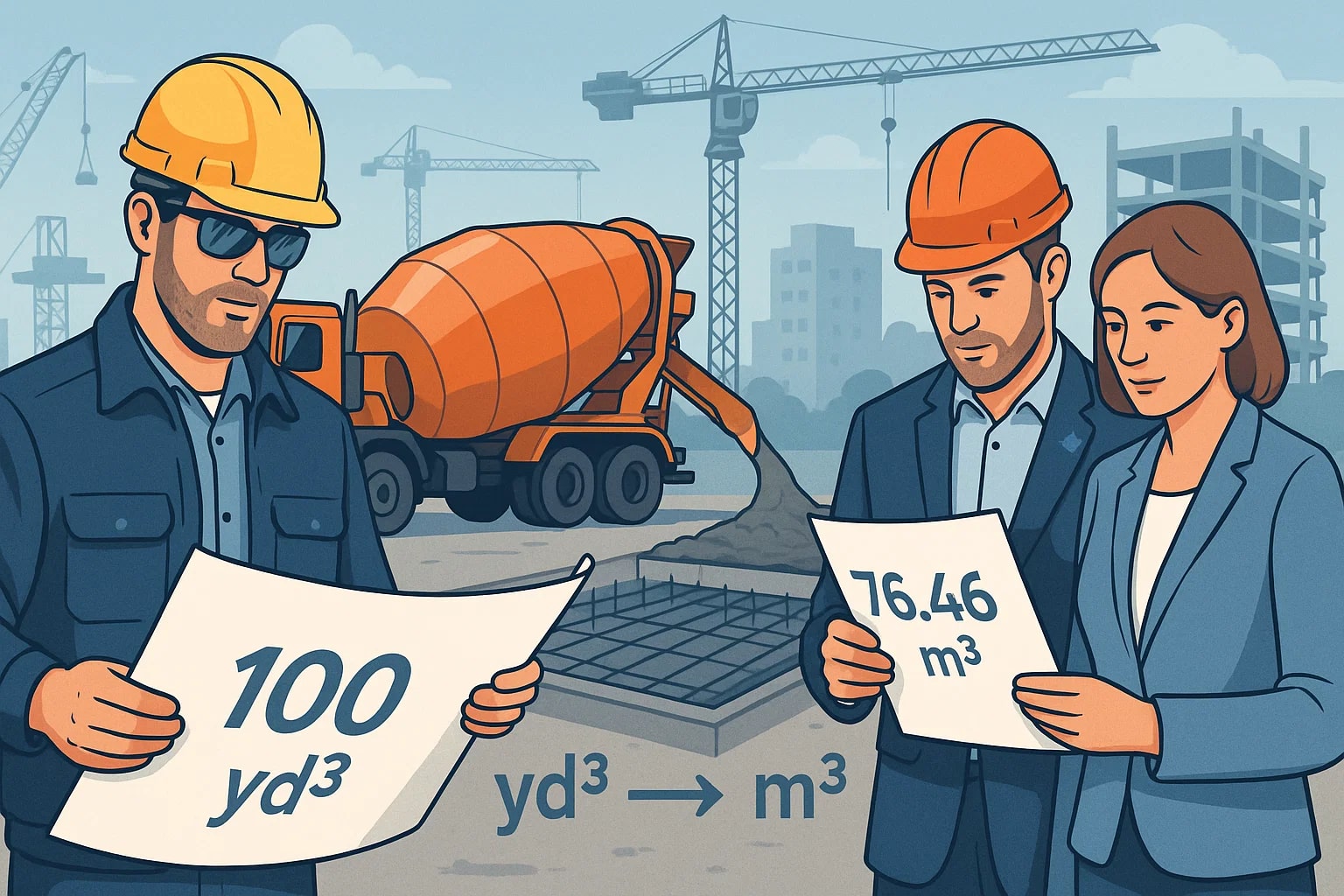cubic yard to cubic meter – How to convert yd³ to m³
Switching from cubic yard to cubic meter is a daily need in construction, landscaping, and engineering. The cubic yard belongs to the imperial system, while the cubic meter is the SI standard. Converting between them ensures accurate estimates whether you’re ordering concrete, gravel, or soil. Jetcalculator makes this process fast and precise, but let’s dive into what these units mean, how to convert them, and where they matter most.
What is a Cubic Yard (yd³)?
A cubic yard (yd³) is the volume of a cube with each side measuring 1 yard (3 feet). This equals 27 cubic feet. Cubic yards are widely used in the United States for measuring bulk materials like mulch, sand, gravel, and concrete. For instance, a typical garden bed might require 2–3 cubic yards of soil.
What is a Cubic Meter (m³)?
A cubic meter (m³) is the SI unit of volume, defined as a cube with sides of 1 meter. It equals 1,000 liters or 35.3 cubic feet. Cubic meters are common worldwide in engineering, shipping, and large-scale construction projects. For example, a small concrete mixer might hold 1 m³ of material.
Formula to Convert yd³ to m³
Since 1 yard = 0.9144 meters, the formula is:
-
1 yd³ = 0.7646 m³ -
1 m³ = 1.308 yd³
So the conversion formulas are:
-
V (m³) = V (yd³) × 0.7646 -
V (yd³) = V (m³) × 1.308
Example: 10 yd³ = 7.646 m³.

With Jetcalculator’s cubic yard to cubic meter converter, you can skip the math and get results instantly.
Did you know?
-
Cubic yard fact: A standard concrete truck in the U.S. carries about 9–10 yd³ of concrete—just enough to cover a small driveway.
-
Cubic meter fact: An Olympic-sized swimming pool holds around 2,500 m³ of water. That equals more than 3,270 yd³.
-
Cubic yard fact: Landscaping suppliers often sell mulch in cubic yards. One yard can cover about 100 square feet at 3 inches deep.
-
Cubic meter fact: The world’s largest shipping containers are measured in cubic meters, often exceeding 76 m³—roughly the same as 100 yd³ of space.
Bridging Systems: Construction Projects in the U.S. and Abroad
A practical example of yd³ to m³ conversion can be seen in construction projects that involve international collaboration.
Suppose an American contractor is hired to help with a project in Europe. In the U.S., the contractor estimates needing 100 yd³ of concrete for the foundation. But European suppliers quote volume in cubic meters. Without converting, orders could be massively off.
Here’s the calculation:100 yd³ × 0.7646 = 76.46 m³
This means the contractor must order 76.46 m³ of concrete. If they mistakenly ordered 100 m³, they would have paid for 24% more material than required—costly and wasteful.
This real-world example highlights why knowing the conversion is crucial. From small landscaping jobs to megaprojects like bridges and skyscrapers, accurate unit conversions keep costs under control and ensure smooth communication between suppliers, engineers, and workers across different measurement systems.

Conversions that Build Trust
The conversion 1 yd³ = 0.7646 m³ bridges two worlds—the imperial system used in the U.S. and the metric system used almost everywhere else. Whether you’re pouring a driveway, ordering soil, or managing a global construction project, this conversion ensures clarity and accuracy.
Jetcalculator’s cubic yard to cubic meter converter makes it easy to get precise results in seconds. For broader needs, try our Volume Converter or explore the full range of Conversion Tools to handle every calculation confidently.

